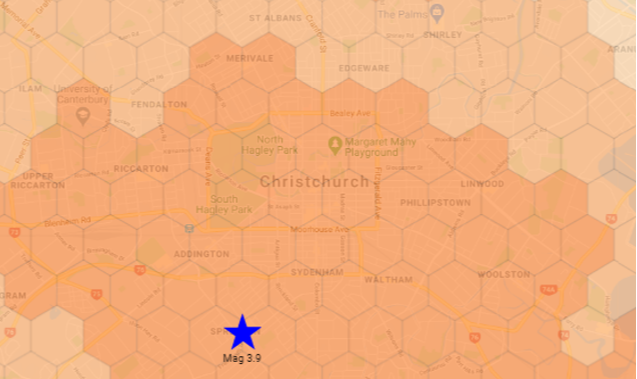 When an earthquake strikes, the go-to resource for most New Zealanders is GeoNet. Following an event, people quickly jump onto the site to review the magnitude and the intensity of the quake or “reported shaking”. But before accepting this information, it’s important to first understand how GeoNet sources these reports.
When an earthquake strikes, the go-to resource for most New Zealanders is GeoNet. Following an event, people quickly jump onto the site to review the magnitude and the intensity of the quake or “reported shaking”. But before accepting this information, it’s important to first understand how GeoNet sources these reports.
The GeoNet website explains that the magnitude rating is measured by “country-wide network of seismic stations” and then the “magnitudes from all available stations are then averaged to give an overall value for the event.” The “reported shaking” is calculated from feedback from website visitors who choose to submit a “felt report”. This “felt report” is based entirely on other people’s perception of the shake and can vary significantly.
In fact, GeoNet provides a disclaimer that states, “… as there is uncertainty inherent in information concerning geohazards, especially as regards any prediction of future events, the information on this website is provided without warranties of any kind including accuracy, completeness, timeliness or fitness for any particular purpose.”
So GeoNet provides interesting information on the earthquake itself, and about what other people may have perceived in their buildings, at their locations. But it does not tell you what shaking actually occurred at a specific location. Nor can it, or should it, be used to make important decisions like "should I evacuate", "is it safe to go back in", "should I call my engineer".
Our solution, Sentinel, is a global first for urban earthquake effects management. Sentinel delivers Earthquake Response and Resilience as a service with best-practice Health and Safety, eliminating unnecessary business closures and accelerating economic recovery. The unique end-to-end service measures shaking and generates, in real time, a ground response spectrum for every individual building covered by our service. Sentinel then directly compares ground shaking against the NZ Building Code design demand of your individual and instantly alerts you to your building’s status, sending directly to offices, sites, assets, alerts, smartphones and computers..
To help you understand this technology, we've created a situation based on a real earthquake that illustrates what Sentinel does, and how you can use the information to make decisions about your building and your business.
You are:
The property manager of a building on the corner of St Asaph and Madras Streets in the Christchurch CBD
The Event
An earthquake beneath Christchurch, 8:43 am Monday July 22, 2019
The Situation
People are just arriving for work. The shaking is enough to alarm some people. Others are standing around wondering what they should do - can they enter the building safely?
Let's look at GeoNet's report on this particular quake:
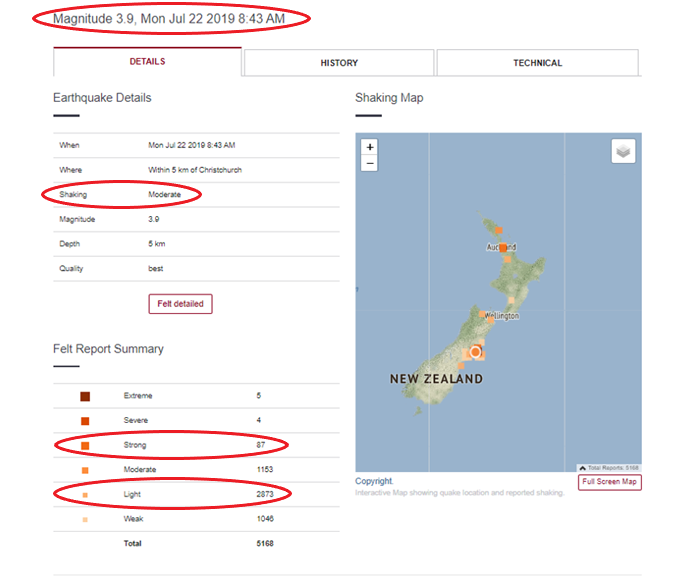
Here is a breakdown of the key results GeoNet has provided:
|
Magnitude: |
3.9 |
|
Moderate shaking: |
What does that mean? What impact has it had on the building? |
|
Felt: Variable |
Some people thought it was a light shaking, others reported that it was strong. So which one was it? Because these reports are based on individuals and everyone has a different idea of what they felt, it really tells you... nothing. |
Let’s take a closer look at the GeoNet report:
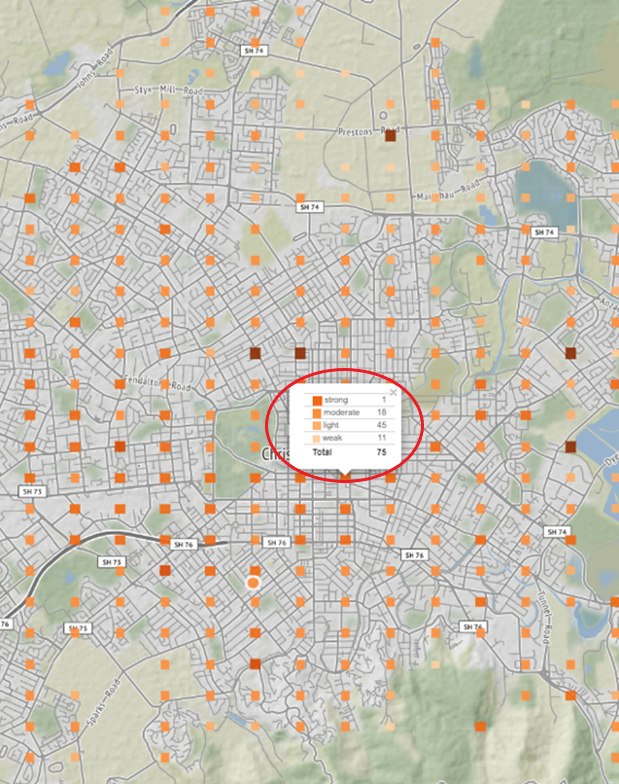
GeoNet had a total of 75 felt reports from people near the location of the earthquake, but the shaking feedback results vary significantly, ranging from weak to strong
It’s important to examine this report and understand how these results are measured. Starting with the measurement of the magnitude (3.9), this is based off a few scattered seismographs around the city report provides basic information that is based off other people’s perception of the shaking. In addition, the information provided doesn’t include the effect of the quake on your building on the corner of St Asaph / Madras streets.
Now let's assume you're a Sentinel user, and you have immediate access to the data it provides. Unlike GeoNet, Sentinel relates the shaking acceleration (intensity) and how rapid the shaking is (frequency), to how the building behaves. Sentinel’s Ground Response Spectrum is easily related to building design strength in ways other measurements cannot.
Based on the expected size of large earthquakes, the NZ Building Code defines limit state curves of shaking intensity vs. frequency. The curves are scaled based on soil type, building importance level and percentage of code.
Sentinel provides instant and accurate results with alerts to your phone, laptop or other systems. It directly measures ground shaking at hundreds of points. It then instantly compares the point-by-point shaking to every individual building’s design limits using best-practice and well-proven spectral analysis techniques. Results are sent immediately to the building occupants, the building manager and the structural engineer.
Now, let’s review what Sentinel reported on this earthquake:
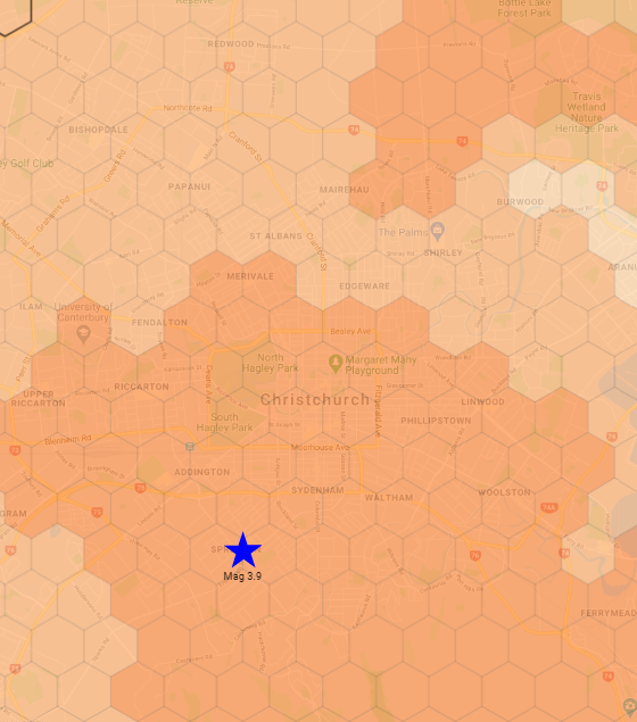
Based on the above, I know what the ground shaking is at my building, from the nearest sensor. I don’t have to rely on other people’s guesswork.
And by a quick click I know what it means:
MODERATE: Generally felt outside and by almost everyone indoors. Most sleepers awakened and a few alarmed. Small objects shifted or overturned. Some glassware and crockery breakage, doors swing open and shut.
I can also know what’s happened to my friend’s and family based on the same report (pictured below).
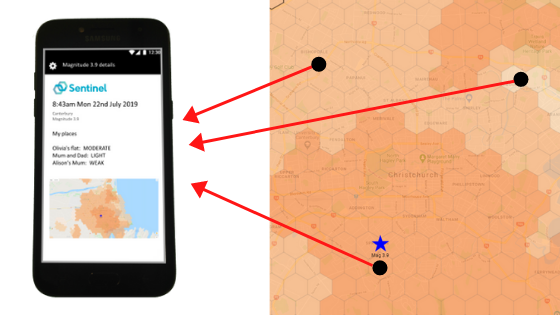
And what about my building?
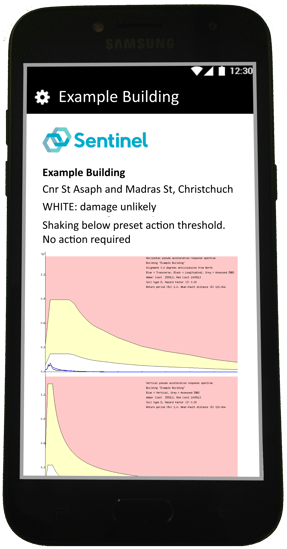
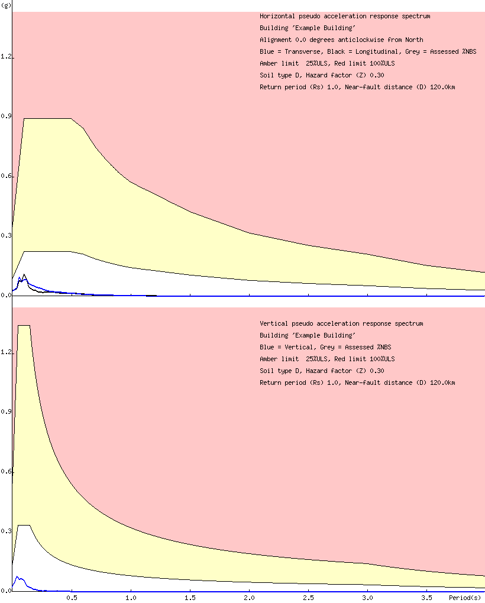
A further breakdown of the information Sentinel provided:
|
Groundshaking for your building, from the nearest sensor: |
You don't have to rely on the guesswork of others. In this case, the shaking was MODERATE. This means it was felt outside and by almost everyone indoors. Small objects shifted or overturned. There was some glassware and crockery breakage, with doors swinging open and shut. |
|
The comparison of the ground shaking to the building’s design strength: |
It was 19%, which means it remains in the WHITE zone in horizontal and vertical planes. The AMBER limit is 25%, which means that damage is unlikely and the building should remain fully operational. |
|
Your decision: |
Business as usual. No need to evacuate |
Sentinel is the technology that ensures you make the right call following an event. Equipped with the information specific to your building when you really need it, in whatever format you need.
Sentinel is monitoring more than 150 buildings and keeping 100,000 people safe. Sentinel’s subscription service covers all of New Zealand. No installation. No maintenance. No building owner permission. No hassle. No up-front cost. No delay.
Are you responsible for your people’s safety and your organisation’s continuity? Then get in touch with us for a free demo to find out how Sentinel can provide the assurance you need.

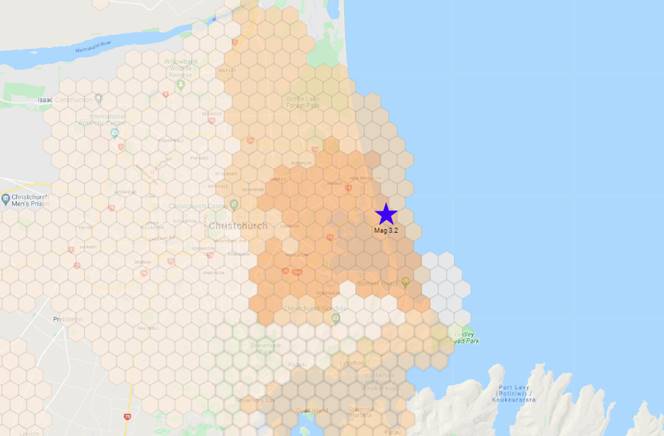
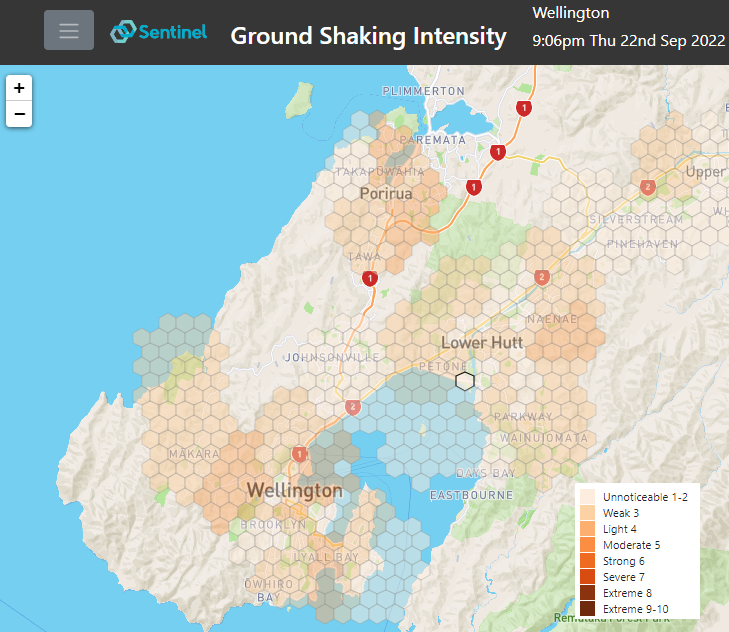
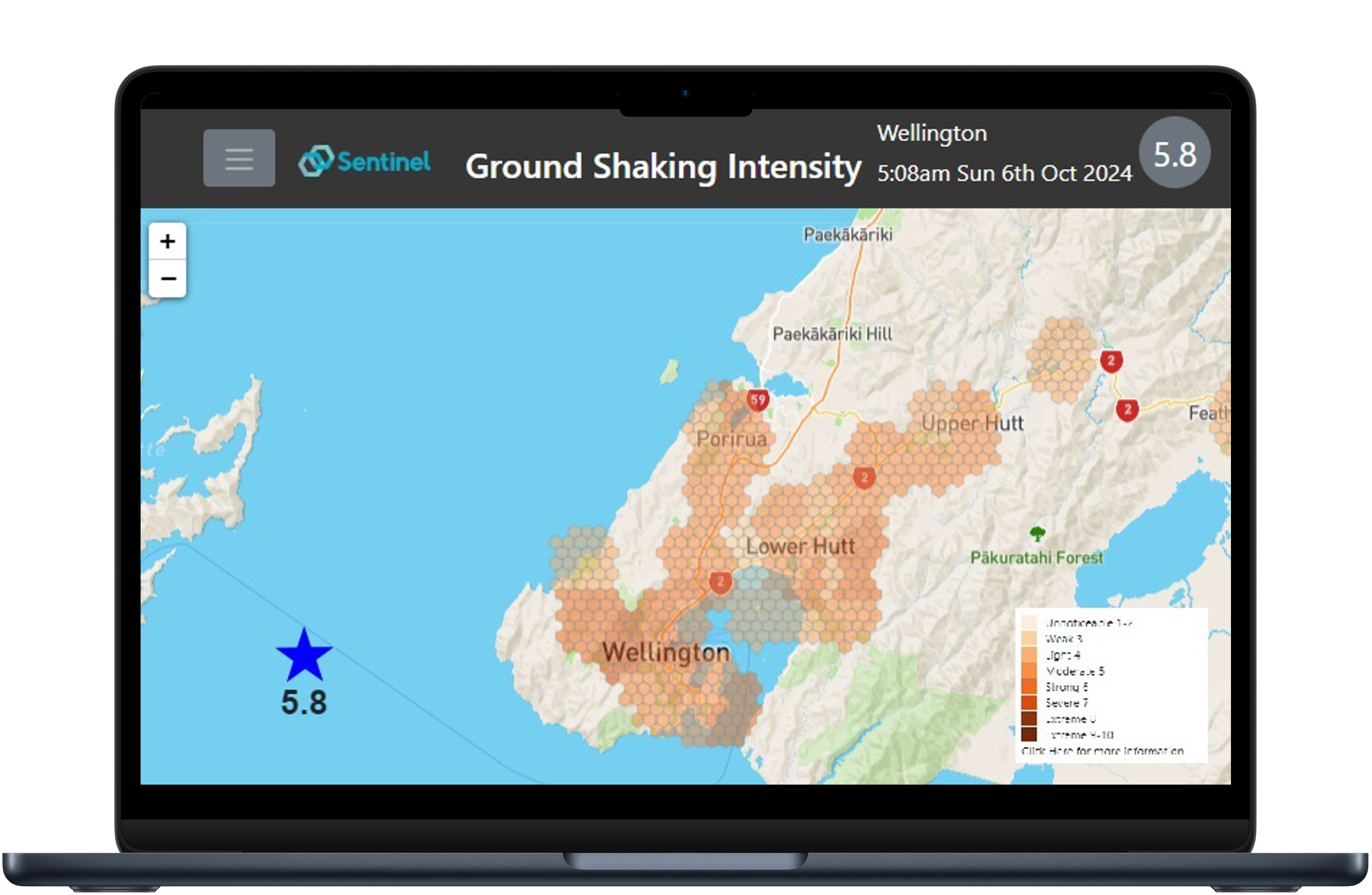
SHARE